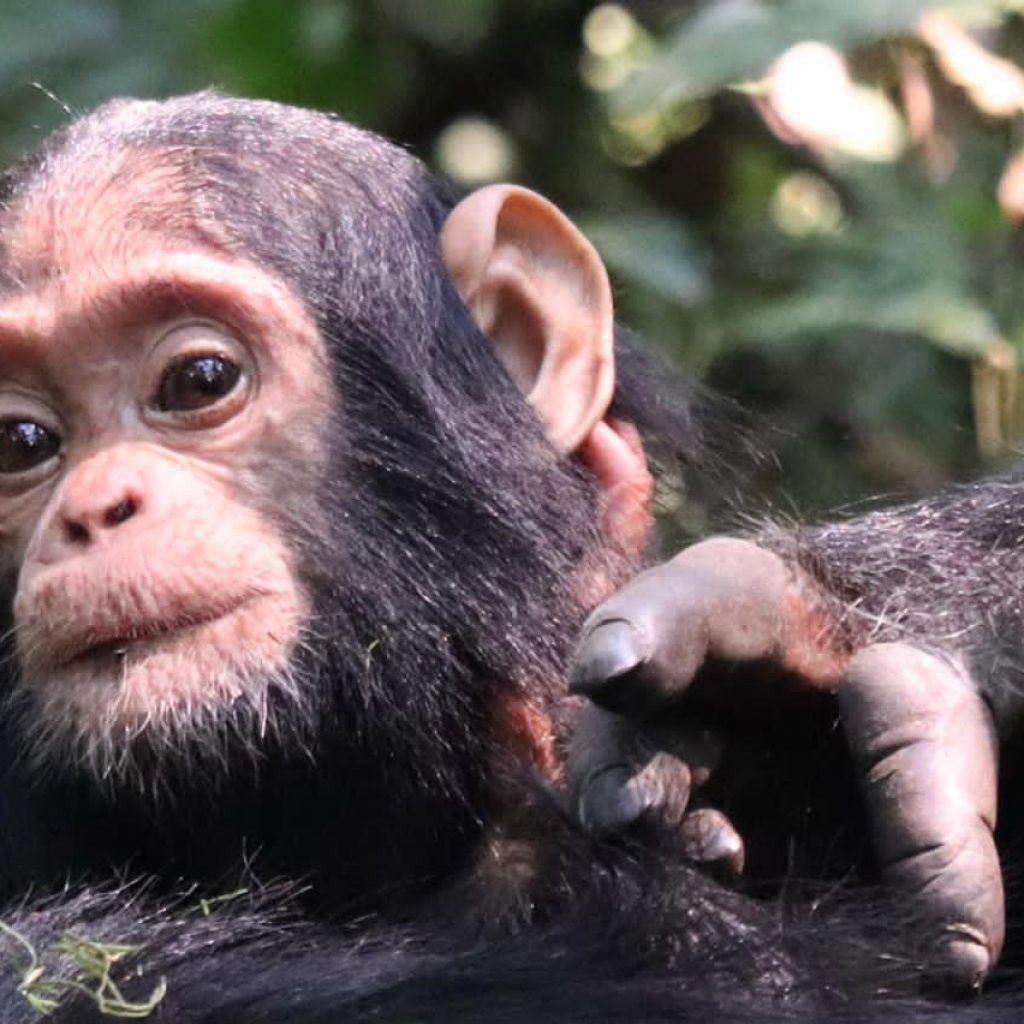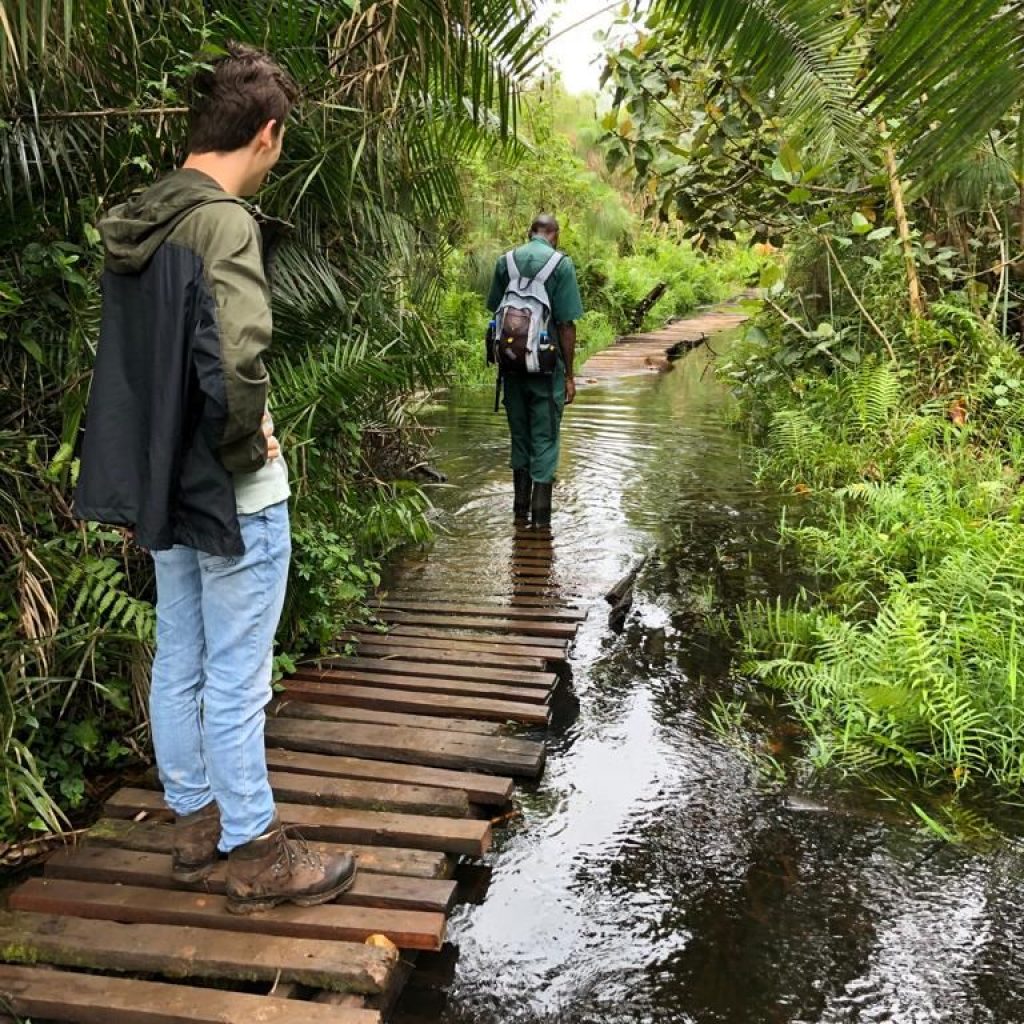Kibale Forest National Park
Kibale Forest National Park
Kibale National Park is a national park in western Uganda, protecting the moist evergreen rainforest. It is 766 square kilometers (296 sq. mi) in size and ranges between 1,100 meters (3,600 ft) and 1,600 meters (5,200 ft.) in elevation. The park forms a continuous forest with Queen Elizabeth National Park. This adjoining of the parks creates a 180 kilometers (110 mi) wildlife corridor. It is an important eco-tourism and safari destination, well-known for its population of habituated chimpanzees and twelve other species of primates.
Primate capital of the world
Chimpanzee trekking
Kibale Forest National Park is one of the top 10 primate destinations in the world, and if that doesn’t pique your interest, maybe Chimpanzee Trekking through the park will.
Famous For
Kibale Forest is the most important site for chimpanzees and monkeys in the whole world, no wonder it is called the primate capital of the world. In addition to primates, Kibale has over 350 bird species and over 250 species of butterflies. The massive park cradles more than 13 species of primates, including chimpanzees and baboons, in addition to elephants, waterbucks, and other wildlife. Nowhere else in Uganda can you find a greater number of primates (including the rare black-and-white colobus monkey).
The park can be accessed by both road and air. It is a six-hour drive from Entebbe airport. A drive from Murchison Falls takes about 7 hours. Connecting to Queen Elizabeth from Kibale takes about 3 hours. It is also possible to fly from Entebbe to Kasese, then by road to Kibale, bringing your journey to 3 hours.
Kibale Forest national park offers a range of adventurous memorable safari activities and includes Chimpanzee trekking and many others. Chimpanzee trekking fees for Foreign Non-Residents (FNR) are $200, Foreign residents (FR) $150, and East Africa Community residents (EAC) UGX150,000
The general concept of ‘when to visit’ doesn’t necessarily apply to Uganda. Kibale is open for Chimpanzee trekking all year long, but the best times to go are from June to August and December to February. This is a time when it is a dry weather and the forest trails are drier and therefore less slippery.
Kibale National Park is a national park in western Uganda and is home to 13 species of primates including chimpanzees. This diverse range of animals attracts numerous researchers to the park each year who come from all over the world to study their behavior, biology, and conservation needs. Kibale supports one of the most advanced research centers in Uganda where scientists from all over the world come to study primates and their behavior.
Kibale Forest National Park is one of the top 10 primate destinations in the world, and if that doesn’t pique your interest, maybe Chimpanzee Trekking through the park will. In addition to primates, Kibale has over 350 bird species, six of which are endemic to the region, 14 species of snakes, 27 species of frogs, 20 species of other reptiles, and over 200 species of butterflies. There is no doubt that this is one of the richest ecosystems in the whole of Africa.
Chimpanzees are primates that share 98% of their DNA with human beings and therefore they share the same qualities and abilities. Researchers who spend time with them report that chimpanzees are curious, inquisitive, artistic, intelligent, loving, and very creative. They enjoy spending time together and supporting each other socially and emotionally. And recent research shows that apes are capable of recognizing their reflection in the mirror, just like we do.
Uganda has a total of at least 4950 chimpanzees and Kibale national park holds about 1500 alone. For chimpanzee trekking, Kibale Forest National Park is one of the best places in Uganda to see these apes. Chimpanzees venture out near dusk, but early morning is the best time for a visit with the chimps. Trekkers are rewarded with up-close glimpses but must keep their distance to avoid disturbing the animals and disturbing their natural patterns.
With overlapping conservation areas, Kibale Forest National Park is one of the most biodiverse places in Uganda. Among the species, you'll find include the blue monkey, L’hoesti monkey, red duiker, blue duiker, bushbuck, sitatunga, and Hippopotamus.
Kibale is particularly rich in primates, with 13 species present, the highest concentration of primates in Africa. Chimpanzees take the largest population of primates and are the main attraction. Others include Black and white colobus monkey, grey checked mangabey, red colobus monkey, L'Hoest's monkey, and olive baboon among others.
Bigodi Wetland Sanctuary
Bigodi Wetland Sanctuary located on the outskirts of Kibale Forest National Park is 6 KM south of Kayanchu, the centre of Kibale Forest. The Sanctuary is run by the Kibale Association For Rural and Environmental Development (KAFRED), a local community project and is recorded as a great sustainable tourism project in the country.
With it's 4.5 KM circular trail, the swamp has a lot to offer in a short period of time and is also one of the best guided bird trails in East Africa including an opportunity to see up to eight different primate species.
Bigodi wetland is such a gem packed with so much to see. For bird lovers, there are up to 200 bird species including the great blue turaco, papyrus gonolek, kingfisher, waxbill, grey-throated, yellow-billed, yellow-spotted, and double-toothed barbets, yellow-rumped and yellow-throated tinker barbets, yellow-bill, and a black-and-white casqued hornbill, and many others.
Chimpanzee Trekking
Kibale forest national park is the best tourist destination when it comes to chimpanzee trekking in Uganda. Most of the chimpanzee trekking safari is combined with gorilla trekking in Bwindi impenetrable national park. Kibale is referred to as the world primate capital with over 1500 chimpanzees with some of the habituated.
Although all of the chimpanzees in these places are wild, many groups have become fully habituated to humans. This means that along with your guide you can get much closer to them to study their behavior and to take photographs. You will often hear them long before you see them as they whoop and holler and break branches high up in the dense forest canopies they inhabit.
Other destinations to track chimpanzees are Toro-Semliki wildlife reserve, Kyambura Gorge of Queen Elizabeth National Park, Budongo Forest Reserve, Kaniyo Pabidi in Murchison Falls National Park, and Kalinzu Forest Reserve.
Chimpanzee Habituation
Chimpanzee Habituation is the process of taming wild primates and getting them used to human presence around them and it can take close to 3 years to be completed. In Kibale, a community of around 350 individuals has been habituated over the past five years and is still undergoing the process.
This is a fun and challenging activity in the rainforest! It starts around 6 AM local time in order to get maximum chimpanzee sightings. Chimpanzees here build their nests by weaving (lacing) branches together from one or more trees. They spend a night or two sleeping in their nests, but sometimes build them in the afternoon to take a nap.
Chimpanzees exhibit unique behaviors related to feeding, resting, and grooming. These behaviors provide insights into the physical and mental health of these highly social primates.
Birding
Kibale Forest National Park is not only known as the world's primates' capital, but it is also a birdwatcher's paradise. The park is home to over 350 bird species, including the Green-Breasted Pitta which is only recorded in this forest, and also the great blue turaco. This countryside is a haven for bird lovers, who come to visit the abundant wildlife found here.
Kibale includes other bird species that have not been recorded in any other national parks in Uganda: the Blue-headed bee-eater, the Masked Apalis, the Nahan's francolin, and the Cassin's spinetail.
Otherwise, the checklist for Kibale includes a similar range of forest birds to Semliki National Park, with the exclusion of the 40-odd Semliki ‘specials’ and the inclusion of a greater variety of water and grassland species.
Kibale has a population of at least 1500 chimpanzees, which makes up 30% of the overall population in Uganda making it a prime destination for chimpanzee trekking. There are 3 habituated communities across Kibale national park, with one community set aside for tourists while the remaining two are for research purposes.
You can go chimpanzee trekking all year-round, but most travelers choose to do it in the driest months of the year – June to August and December to February. This activity is done twice a day (at 8 AM local time and at 2 PM local time) and the chances of seeing a chimpanzee community in Kibale stand at over 90%.
You need to book a chimpanzee trekking permit, which we will secure for you upon booking. The permit should be arranged five or six months in advance of your visit as there are only a few permits issued each day and they all get booked up during the busiest months of the year (June to August, as well as December to February).
The cost of the permits during peak seasons is 200$ while Chimpanzee habituation experience will cost $220.




